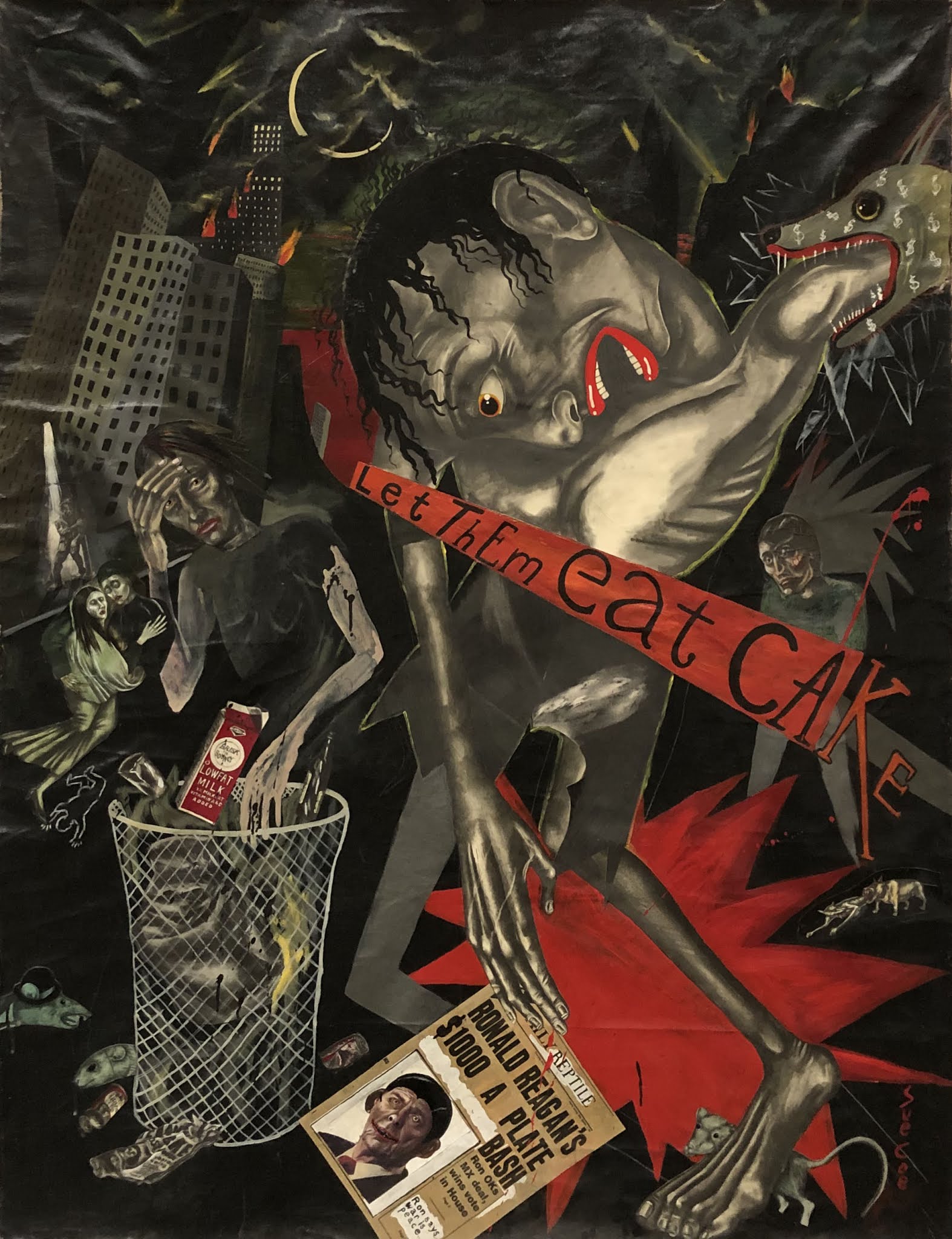 |
| Sue Coe, Let Them Eat Cake, 1986 |
The Broad's "Invisible Sun" is a social justice-themed selection of works from the collection, one of many such shows being presented by museums nationwide. The surprising subtext is Eli Broad's early history as a collector of political work by artists trending in Reagan-era New York: Sue Coe, Leon Golub, Ray Smith, and David Wojnarowicz. Broad later become known for chasing art-fair stars; thus, some of the 80s political work has been shown rarely or not at all. It supplies an invigorating core to "Invisible Sun."
 |
| Julie Mehretu, Congress, 2003 |
Actually, the show opens with two recent A-list purchases, a Julie Mehretu (Congress) and a David Hammons African-American Flag. These works plunge the visitor into a room of 1980s paintings by Wojnarowicz and Ross Bleckner that are now seen as encrypted critiques of Reagan administration inaction on AIDS. An unusual Bleckner, Unknown Quantities of Light (Part IV), blurs op art stripes into a study in melancholia.
 |
| Ross Bleckner, Unknown Quantities of Light (Part IV), 1988 |
 |
| David Wojnarowicz, The Newspaper as National Voodoo: A Brief History of the U.S.A., 1986 |
Broad bought three Wojnarowicz painting/collages in 1986, all freshly created at the time and now on view. The Newspaper as National Voodoo pegs voodoo economics and has been the most shown.
Reaganism is explicit in a 1986 Sue Coe, Let Them Eat Cake (top of post). Coe falls into the uncanny valley between artist, illustrator, and political cartoonist. Broad bought four major Coe paintings, all of the mid 1980s, and then seemingly forgot about the artist. As far as I know, this is the first time that any of the Coes have been shown at the Grand Avenue museum.
 |
| Ray Smith, Guernimex, 1990 |
Ray Smith's Guernimex is also making its Broad debut. It's more subtle and fun that the goof on Picasso (and Mexican muralism) might lead you to expect. Guernimex was created in reaction to Mexico's "Dirty War," in which a U.S.-backed authoritarian regime crushed dissent. The three identifiable portraits are (left to right) President José Lopéz Portillo, soccer star Enrique Borja, and choreographer Amalia Hernández, founder of Ballet Folklórico de México. The rats and dogs picture epithets used for corrupt politicians.
The show's most unlikely pairing is an El Anatsui wall hanging with an Alexander Calder mobile. The former is understood in the context of colonialism; the latter is white-cube (white-guy) formalism squared. I don't quite get why the Calder is in this particular show. But the Broad has six Calder mobiles, and several were lent to LACMA's 2013 Calder exhibition. This is first time one has been shown at the Broad.
 |
| El Anatusi, Intermittent Signals, 2009, and Alexander Calder, Le Rouge de Saché, 1954 |
 |
| Lari Pittman, The Veneer of Order, 1985 |
 |
David Hammons, African-American Flag, 1990
|








Comments
Let them eat cake, indeed.
Neither did the artist after the two scandals --- one involving Alec Baldwin and the other involving his studio assistant.
The work itself now trades well below today's market stars. Curatorial support has also waned, a reflection perhaps of the moral and conceptual incongruity of his formalism (with its origins in op art) and the AIDS crisis.